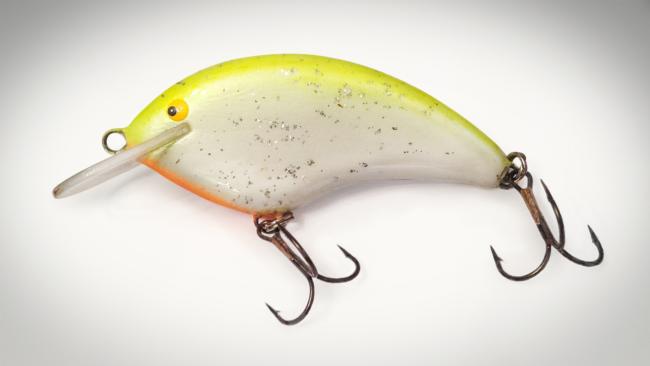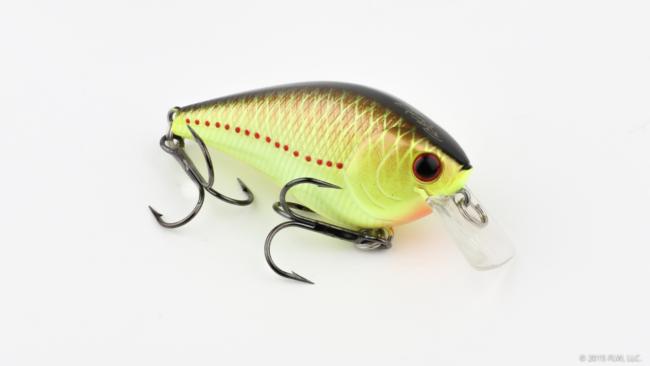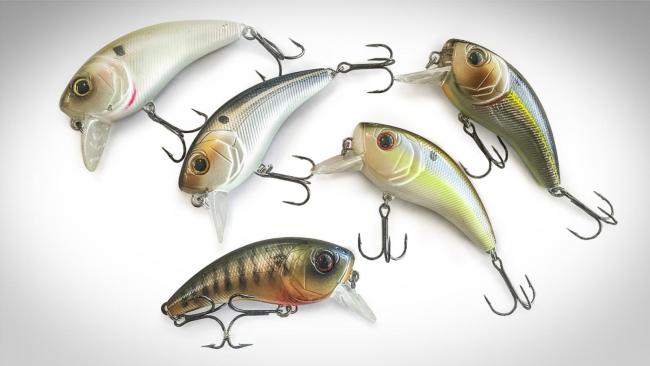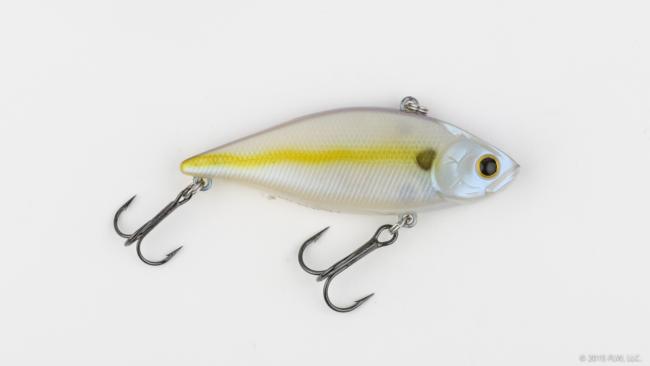Four Fall Crankbait Patterns
Now is the time to start cranking
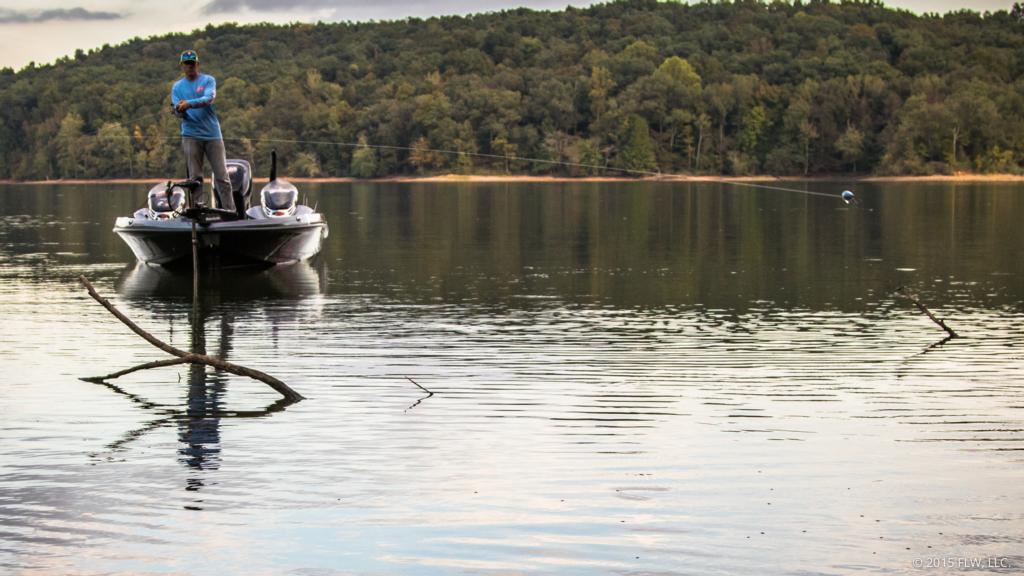
There’s almost always a crankbait bite somewhere, but crankbaits truly shine in the fall as bass are loading up on baitfish. We talked with a few different pros and got them on record about their favorite crankbait tactic for hoodie season.
Go finesse
South Carolina pro Brandon Cobb says he’s not much of a crankbait fan until the water temperature drops into the 60s and 50s. Once he does grab a crankbait, the young pro like to head for the creek backs and get to work.
“Around here (the Carolinas) a flat-sided balsa bait is really good,” explains Cobb. “My favorite one is made locally and called a Gulp crankbait, but any flat-sided balsa bait with a small rounded bill that dives 3-5 feet will work good.”
Balsa in hand, Cobb looks for stained water in the backs of creeks that have plenty of shad.
“My favorite thing to target with a shallow crankbait is docks,” details Cobb. “I like to throw it down the sides, across the front and around any brush in front of it. In between the docks, I start covering the water really fast. More often than not, you’ll find a little stretch on the bank that has a lot more fish on it. So if I get a few bites in an area I usually double back and fish through it again.”
Because Cobb likes to throw such a small bait, he uses a medium-action spinning rod with 8- to 10-pound-test fluorocarbon to make for easier casting. For colors, Cobb sticks to shad patterns in the fall. In water with a heavier stain Cobb opts for pearl with a chartreuse back and in clear water he prefers a more natural shad color.
Pester them into biting
Hailing from North Carolina, Tracy Adams takes a similar approach to location as Cobb does, but he has a different strategy for getting the bass to commit.
“The crankbait I like to use is a Lucky Craft LC 1.5 in the black moss color,” says Adams. “Its basically black and chartreuse, but the sides aren’t bright.
“The situation I look for is the backs of creeks with some stained water and any kind of wood,” adds Adams. “There needs to be some stain – about 6 inches of visibility is best. I target any wood from the bank to about 4 feet deep. I’ll fish a place without shad if I know the lake, but if it doesn’t have any bait then I’m not going to spend a lot of time in there. I’ve definitely caught them without bait, but that’s only on places I knew were good to begin with.”
Adams’ strategy for actually getting the bass to bite is unique.
“A lot of times in the fall you need to make repeated casts to a log or branch,” Adams explains. “I’ll make maybe 30 or 40 casts in a row to a piece of cover if it’s a good log or just looks right. I don’t know how many times I’ve just kept throwing and throwing and then all of a sudden – boom – a big one eats. You’ll catch fish that a lot of guys won’t catch. I think that works better in the fall than any time during the year.”
In addition to hitting the cover multiple times, Adams likes a stop-and-start retrieve. He says that pausing for a moment after the crankbait runs over a piece of cover can be a deadly trigger on big bass.
“Usually after the first frost is when it’s the best to really go after them,” says Adams. “The optimum water temperature is from about 68 degrees down to the low 50s. It’s a pattern you’ll really have about a month or so to fish.”
Adams likes to do his fall cranking with a 6-9, medium heavy-power, moderate fast-action Cashion Elite Cranking Rod with a Bass Pro Shops Pro Qualifier baitcasting reel (6:1 gear ratio ) and 17-pound-test Bass Pro Shops XPS fluorocarbon.
Wake ’em up
While Walmart FLW Tour Rookie of the Year Zack Birge is happy to chuck a squarebill in the backs of creeks, he likes to pick up a wake bait for grass lakes such as Sam Rayburn.
“I like to throw the 6th Sense Lure Co. Movement 80X. For a grass lake in the fall it’d be my number one choice” confesses Birge. “It’s unreal how many fish that thing catches. You can basically plow it into the grass and fish go crazy for it.”
Birge particularly likes to throw the Movement in prefishing situations. He’ll often start in the back end of a creek and move quickly, looking for small ditches and drains in the grass with concentrations of bass. Though bass focus on shad in the fall, Birge says he doesn’t worry if a creek isn’t full of them.
“You can wake it across the top of the grass, but it’ll get down about 3 feet deep too,” says Birge of the Movement. “It’s got a wild action; it’s not like your typical wake bait. It’s usually a pretty vicious bite when they eat it, so I don’t set the hook hard. I just make it load up on them, like I would with a deep-diving crankbait.”
Birge’s favorite fall color is shad flasher, and he throws the Movement on a 7-2, medium heavy-power, fast-action Falcon Cara McClelland ST Micro casting rod matched with a reel of 6.8:1 gear ratio and 12-pound-test fluorocarbon.
Burn a lipless
Burning a lipless crankbait is key in the fall, and California pro Jimmy Reese has caught about a million pounds of bass on one at Clear Lake. Here’s his methodology:
“A lipless crankbait is definitely my go-to crankbait in the fall,” says Reese. “I’m looking for a water temperature less than 70 degrees; 68 is good, but it’s game on when the water gets to about 62 to 64. There are two different things I’ll focus on – either docks or dying vegetation.”
When he’s fishing grass, Reese likes to burn the bait fast along the edges and occasionally dip it into the grass so he can rip it out to generate a reaction strike.
“It’s about the area,” reveals Reese. “I’ve got a 2-mile long section I go fish every year and I’ve caught I don’t know how many 20-pound limits in a 30- yard section. But, I don’t think it’s ever been the same 30-yard section. It’s all about the way the weed growth is and the way the bait is. You have to cover the water to figure out where they’re at.”
Reese says that docks can also be prime targets in the fall on Clear Lake.
“It can be an all-day thing. There’s always a morning bite on docks, but there are also times when the bass really want the shade on docks. If I have a good dock where I’ve seen fish before, but doesn’t have fish on it when I’m there, I’ll leave after 15 minutes and hit it again in 2 hours. I can’t say how many times I’ve come back to the mother lode.”
The two lipless baits that get the most fishing time for Reese are a Rat-L-Trap and a Lucky Craft LV 500. Reese prefers to use a natural shad color in clear water and white, citrus shad or bluegill if the water is stained.
For tackle, Reese goes with a Douglas Outdoors XMATRIX 724F, a reel with a 7:1 gear ratio and 12-pound-test P-Line fluoro.
